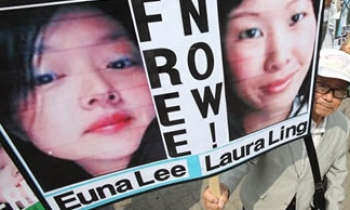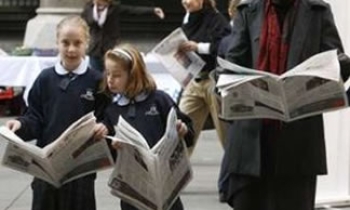Public interest in natural disasters, sports and political scandals in the United States (US) has fallen in the last two decades, the first quite precipitously, a Pew Research Centre survey has found.
Three categories of news shifted downwards, and two of those changes could conceivably be regarded as symbolic of greater seriousness. Interest in natural disasters fell precipitously from an index score of 61 per cent in the 1980s to 38 per cent in the 1990s. Nor did it revive in the 2000s, with the index dropping an insignificant single percentage point. So, too, would the shift away from sports news, with the three decade index scores dropping from 25 per cent to 19 per cent over the period.
The third, and last, category to trend lower, though only slightly, is political scandal. Those following political scandals very closely fell from an average of 22 per cent in the 1980s to 19 per cent in the 2000s. But that anemic trend could readily be interpreted either way -- as either a sign of enhanced or diminished news tastes.
Public interest in news has changed slightly over the last two decades, but in a manner that suggests no meaningful trend, the study report said. The average reading for the Pew News Interest Index did slip during the 1990s from 30 per cent to 23 per cent, a seemingly noteworthy decrease that represents nearly a fourth of the original level. Had the index continued to slide as much in the new millennium, that change would have suggested a trend of potentially great import. But in the current decade the index has bounced back to precisely its level during the 1980s: 30 per cent.
[TABLE=1]
Any hidden trend could not be found embedded within the separate news categories. Among the 19 sub-categories of stories covered by the index, only five moved consistently in either direction — either upwards or downwards. This is not much different from what one would expect by chance. And, if news tastes are at issue, within the five categories one finds contradictory evidence as to whether tastes have grown more serious, or less, the report said.
Two categories of news — "Washington Politics" and "Money" — showed upward trends. That combination might suggest that news tastes actually have become less serious across decades. "Money" news is about the quotidian; "Washington Politics" is sometimes little more than political gossip, the Pew report argued.
In reality, the report felt, this decade-by-decade assessment of news interests means neither a more nor less serious taste in news. While five categories do shift consistently, nearly three times as many show no continuous trend whatsoever. And those that do so fail to establish a meaningful direction with respect to public taste. The only pattern that seems to exist here is "U-shaped," with eight news categories starting "high," slipping in the next decade, then rising, again, in this decade.
The same is true when one groups all 19 news categories into six "super categories." Only one super category — Money News — trends either way: ever upwards. Political News — as measured by the index — does not trend. Nor does Conflict News, Foreign News, nor Disaster News. Neither does Tabloid News.
Across decades, Tabloid News — a combination of stories concerning celebrity gossip, non-political scandals, popular culture, and sports — does not attract greater news attention. Although there is no pattern here, interest in Tabloid News is greatest in the '80s, with an index score of 21 per cent. During the next two decades interest in Tabloid News flattens out at an average 18 per cent. From this evidence one may conclude that the much-discussed soft-news genre — indicated here by Tabloid News — has not grown more alluring for the audience in the US.
Only one category among the six provides a clear-cut case of decade-by-decade change: Money News. This category includes everything from happenings on Wall Street to stories that touch at or near the family purse. Money News registers with audiences, ranking second among super categories with a three-decade score of 34 per cent. And, decade-by-decade, interest in Money News has increased. In the 1980s, its index score was 23 per cent; in the 1990s it moved forward to 29 per cent. In this decade it leaped to 40 per cent.









